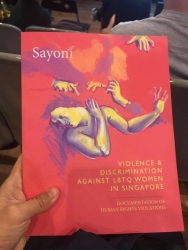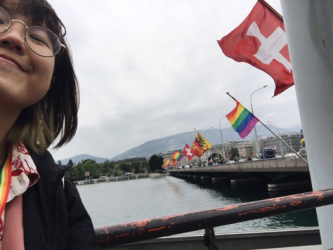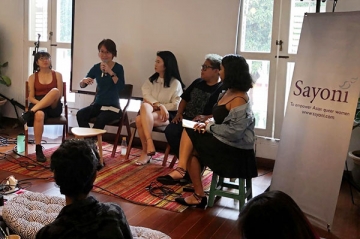—————————————————
Part 1: What is identity?
According to Erik Erikson, identity is a conception of self, made up of goals, values and beliefs to which the person is solidly committed.
Identity is an all encompassing concept. It includes the following:
1. Vocation identity
2. Political identity
3. Religious identity
4. Relationship identity
5. Intellectual identity
6. Sexual identity
7. ethnic identity
8. Personality identity
9. Physical identity
As you can see, sexual identity (i.e. heterosexual, homosexual, bisexual etc.) is one aspect of your overall identity.
—————————————————
Part 2: What is sexual identity?
Sexual identity includes:
1. Being aware of one’s sexual needs (A subjective experience of interest/libido)
2. Adoption of personal sexual values (Moral judgments about desirable/acceptable sexual behavior)
3. Being aware of preferred sexual activities (Any behavior relating to or based on sexual attraction, sexual arousal, sexual gratification or reproduction i.e. fantasy, hand-holding, kissing, sexual intercourse.)
4. Being aware of preferred characteristics (physical, emotional, intellectual, interpersonal, economic, spiritual etc.) of sexual partners
5. Being aware of preferred modes of sexual expression (Any form of verbal/non-verbal communication or direct/indirect signals that one uses to convey one’s sexuality i.e. flirting, eye-movements, touching, vocal quality, suggestive body movements.)
6. Being able to recognize and identify with one’s sexual orientation (one’s personal self-definition on any sexual orientation identity i.e. straight, bicurious, pansexual, gay, questioning, queer etc.)
—————————————————
Part 3: Identity development
Identity development has been said to be life-long. Through out our lives, we gather new information externally (i.e. environment) and internally (i.e. thoughts and behavior of self) and integrate them with existing information about the self. Hence, it is not stagnant- Identity development is an ongoing process.
Statuses of identity development (adapted from James Marcia’s identity statuses):
Some terms:
A crisis occurs when one is faced with a choice between options.
A commitment occurs when one has decided on what one wants to do.
1. Identity Moratorium (Ongoing crisis but have yet to arrive at a conclusion.)
2. Identity foreclosure (Committed without undergoing a crisis.)
3. Identity diffusion (Yet to experience a crisis. Undecided, uninterested and uncommitted.)
4. Identity Confusion (Chaotic experiences and reacts instead of taking initiatives.)
5. Identity achievement (Emerged from a crisis and has decided on commitment.)
What’s your status?
1. Identity Moratorium Status
If you actively seek out information about sexuality (and hence your continued reading!), chances are you are at the moratorium stage. At this point, a person engages in behavioral and/or cognitive exploration. Note that this is different from random, haphazard, naive behavioral exploration. Over here, exploration is purposeful and goal directed, with anticipated outcomes; where conscious decision making is necessary. Examples of active exploration includes reading books about sex; experimenting with different kinds of sexual activities, transcending gender roles through adoption of gender atypical modes of sexual expression etc. Because of homonegativity, societal pressure and all, many who mentally experiment with same-sex partners prefer to be identified as heterosexuals.
2. Identity Foreclosure Status
I believe the large majority falls into identity foreclosure. This status’ chief characteristic is naive commitment to sexual identity. Society and the family lay out acceptable gender roles which may be adopted without questioning. Most heterosexuals do not give much consideration to their adoption of compulsory heterosexuality. These people also tend to be less informed about non-mainstream sexual orientations. This status is also likely to be a starting point for most people. It is impossible to return to this status upon entry into other statuses.
3. Identity Diffusion Status
Diffusion occurs when one has yet to experience a crisis and is undecided, uninterested and uncommitment. In other words- apathetic.
4. Identity Confusion Status
Confusion is similar to active exploration- the crucial difference is that exploration here is not goal directed. Chaotic experiences; being reactive rather than taking initiatives; likely to experience identity confusion in other aspects; lack of self-awareness- these are typical of individuals in this status. Getting out of this status may require professional assistance. Note that a crisis has to take place before diffusion occurs and that people from other statuses can enter this status. However, those who has achieved synthesis (in identity achieved status) are far less susceptible.
5. Identity Achieved Status
This is the most adaptive status. It can be sub-divided into two stages. This first is “deepening and commitment” where there is a greater commitment to one’s sexual identity (refer to above for what this includes). For people who identify with heterosexuality (thoughts, feelings and behavior), they may enter this status without active exploration. Their social and cultural contexts ease their entry into this status. The second (and final) stage, synthesis, marks maturity. People in this stage has developed an understanding of their sexuality that fulfills their self-definitions and they carry over their attitudes towards others of different sexual orientations. People who have reached synthesis have a coherent and consistent relation between all aspects of identity i.e. religious identity and sexual identity etc. This is a complex process and few people reach this final stage.
—————————————————



